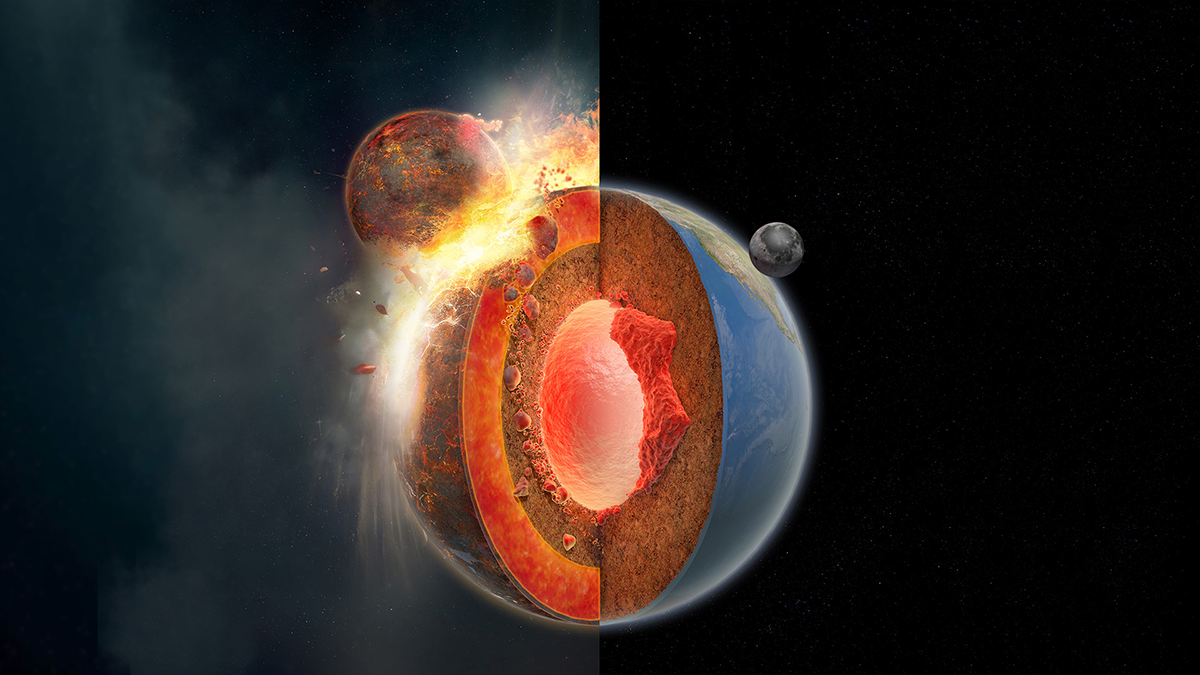Source: Geophysical Research Letters
By 4.3 billion years ago, Earth’s crust may have already looked much like it does today. This is the earliest time some researchers think the plates of our planet’s crust began to slide against, over, and under each other in a process known as plate tectonics. How the very first instance of subduction—a key part of plate tectonics—occurred is still debated.
In a new study, Yuan et al. find evidence tracing the first subduction event to the same impact that created our Moon. The giant impact hypothesis theorizes that early in its history, Earth was struck by another planetary body about the size of Mars, sending a large chunk of rock—the Moon—into orbit.
But this giant impact might have been even more consequential to future life on our planet—within 200 million years, Earth’s crust had gone from a static casing to a dynamic system of plates unique in our solar system, according to analyses of ancient minerals called zircons.
Yuan’s team explored postimpact mantle convection using both 2D and 3D thermomechanical modeling. They found that the increase in temperature at the core-mantle boundary after the giant impact could have led, over time, to strong mantle plumes—phenomena still seen today that can sometimes lead to volcanic activity far from plate boundaries.
Over the course of 200 million years, extrastrong plumes could have formed from remnants of the impactor embedded in the mantle, weakened the lithosphere, and initiated the planet’s first subduction event. (Geophysical Research Letters, https://doi.org/10.1029/2023GL106723, 2024)
—Rachel Fritts, Science Writer

